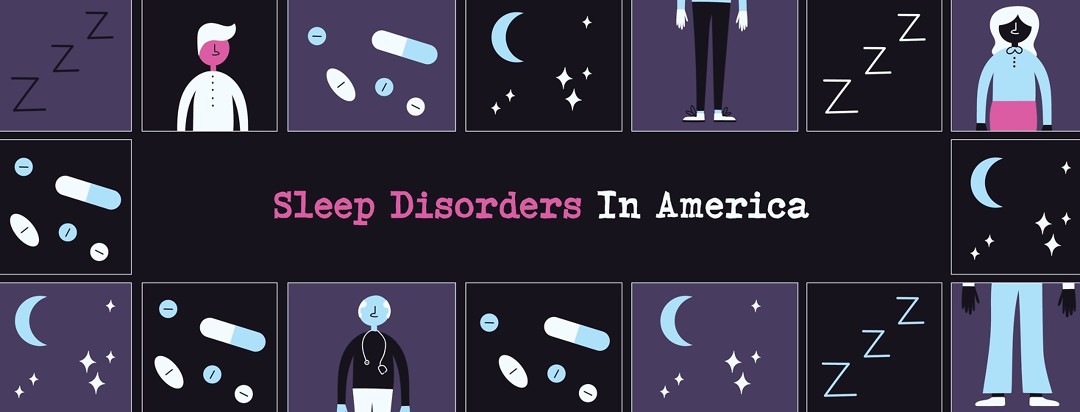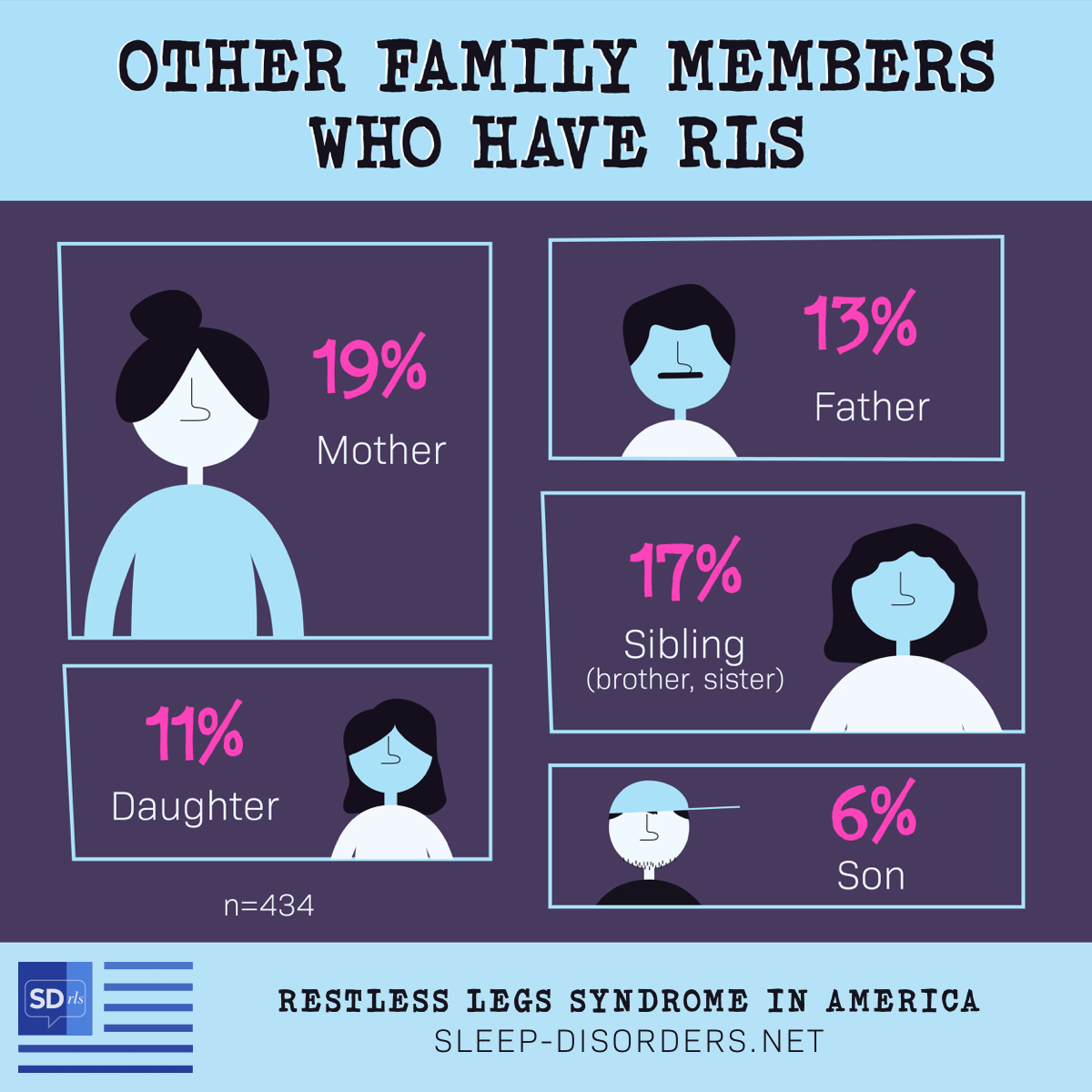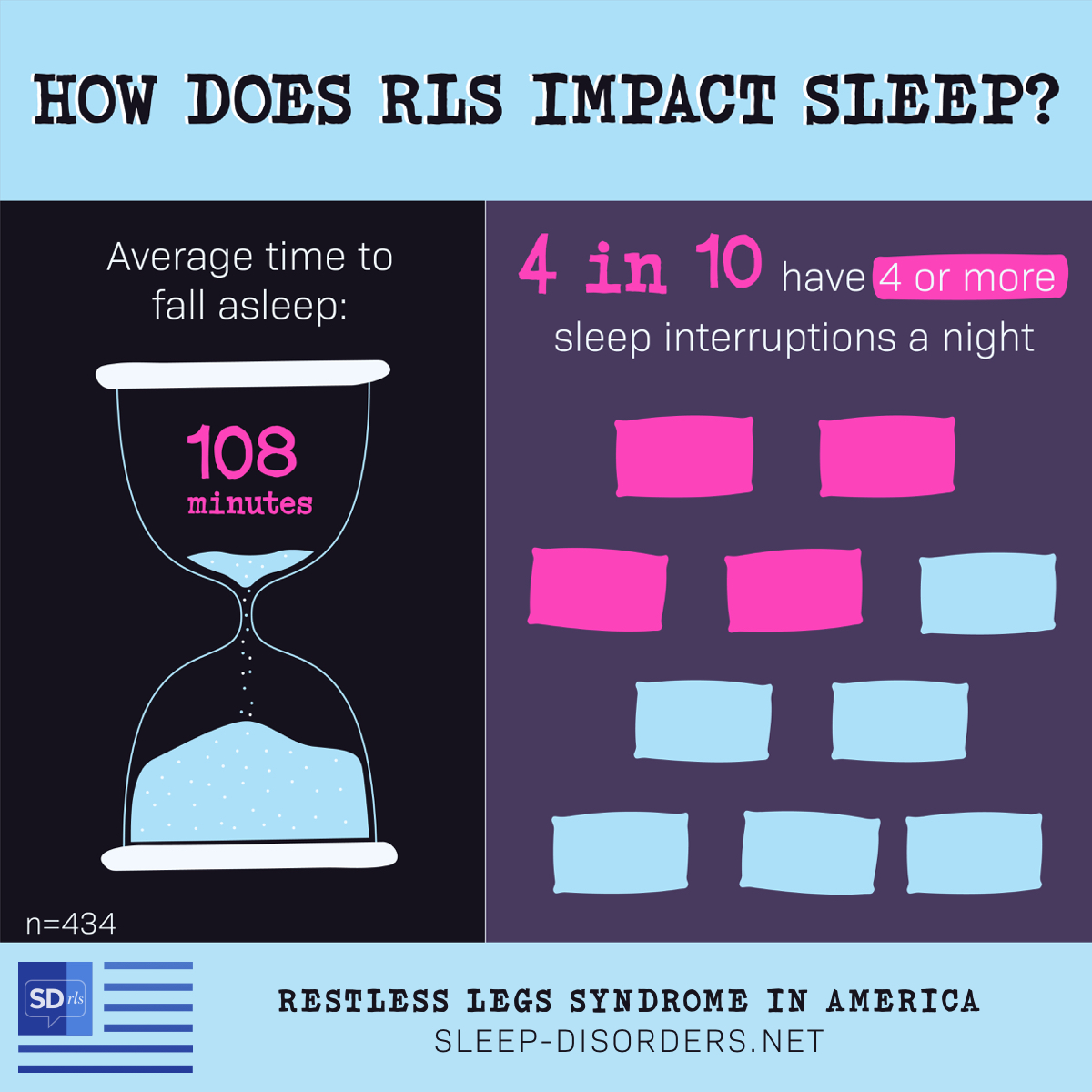Searching for Relief: Results From the Inaugural Sleep Disorders In America Survey
Finding relief for restless legs syndrome (RLS) is no easy task. For many people, getting a diagnosis and starting a treatment plan does not mean the uncomfortable sensations in their legs quickly go away. In fact, it can take a lot of trial and error to find something that relieves the discomfort.
In the meantime, people living with RLS become all too familiar with trouble getting comfortable and waking up during the night. In our Inaugural Sleep Disorders In America survey, we asked people to share what life with RLS is really like.
Does RLS run in families?
It is not uncommon for someone with RLS to know someone in their family who also suffers from creepy-crawly leg sensations. About 58 percent of people surveyed know of a family member who was also diagnosed with RLS. While doctors do not fully understand what causes RLS, genetics and environmental factors are considered likely causes.1
Family members who have RLS might be able to share their own tips and tricks for managing life with RLS. At the very least, it can be comforting to know there is someone else who understands the struggle.
Sleep, interrupted
People with RLS often have a hard time sleeping at night. The unpleasant sensations often come in the evening or around bedtime, when a person is sitting or resting. Roughly 71 percent of survey respondents said they have had difficulty falling or staying asleep within the past month.
Nightly routines to calm the legs may include walking before bed, a warm bath, a gentle massage, or medicine. But despite all of these strategies, many people with RLS experience interruptions in their sleep during the night.
Still searching for relief
It can be hard to describe to a doctor exactly how RLS feels. There is no diagnostic test for RLS. Instead, doctors often rely on symptom history and a physical exam to make a diagnosis. Despite the fact that most survey respondents (80 percent) received an official RLS diagnosis and 72 percent regularly see their healthcare providers for RLS, effective treatment remains elusive for the majority. Only 27 percent* of survey respondents feel their RLS is controlled, and many still experience symptoms most days of the month.
The power of community
For many, managing RLS is a lifelong process. Learning how to manage triggers and symptoms can take time, and our community is one place you can turn to for support and understanding.
Whether you are looking for treatment information, tips to manage while traveling, or coping strategies to try when RLS strikes in the middle of the night, learning from others and sharing our own experiences helps us feel more connected, more informed, and a little less alone.
The Inaugural Sleep Disorder In America survey was conducted online from March through July 2020. Of the 2,198 people who completed the survey, 434 were restless legs syndrome respondents.
*Top 2 responses on 7-point scale




Join the conversation